Har Gow, also known as shrimp dumplings, is a delightful snack that originated from the Guangdong region and is renowned as one of the three dim sum treasures of Cantonese cuisine. This delectable dumpling consists of a thin, translucent wrapper filled with succulent shrimp filling, creating a delightful taste and appealing appearance that is beloved by many. In this article, we will provide a detailed introduction to the preparation and consumption of Har Gow and explore its distinctions from other types of dumplings.
what are har gow dumplings?
Har Gow, a specialty snack from Guangzhou, Guangdong Province, belongs to the Cantonese cuisine and is one of the “Four Heavenly Kings” of Guangdong’s morning tea culture. Originating in the early 20th century, Har Gow features a paper-thin and semi-translucent wrapper, with a delectable filling that includes shrimp, shredded lean pork, fresh fatty pork, bamboo shoots, and chicken fat. Its texture is soft, smooth, and tender, making it a delicious and mouthwatering delicacy.
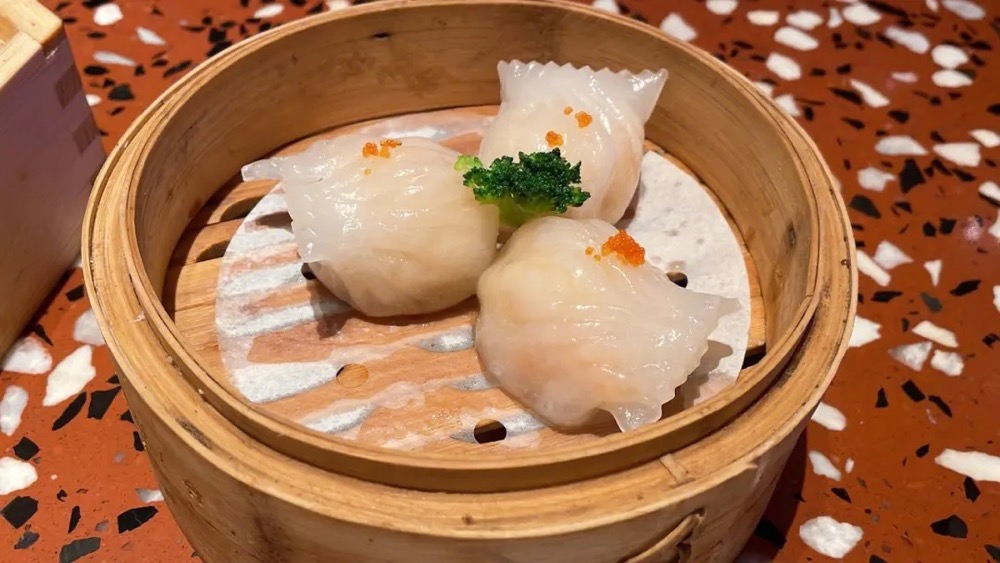
what are har gow called?
Har Gow is commonly known as “Shrimp Dumplings” in English. and called xia jiao in Chinese. It is a popular dim sum dish originating from Guangdong Province, China, and is widely enjoyed in Cantonese cuisine restaurants worldwide. The name “Shrimp Dumplings” reflects its main ingredient, which is shrimp, and its dumpling form, with a delicate wrapper encasing the delicious shrimp filling.
Har Gow, also known as “ha gow,” “haukau,” or “hakao” in English, is a classic Cantonese dumpling that is typically served as a delectable dim sum dish. These dumplings are filled with succulent shrimp and wrapped in a thin, translucent wheat starch skin. The name “Har Gow” is derived from the Chinese characters 蝦餃, where “蝦” means shrimp and “餃” refers to dumplings.
As a beloved dim sum delicacy, Har Gow is renowned for its exquisite taste and delicate appearance. The tender shrimp filling, combined with subtle seasonings, provides a savory and satisfying flavor. The wheat starch wrapper, which is carefully crafted to be thin and semi-transparent, showcases the enticing pink hue of the shrimp inside.
what are har gow look like?
Traditional Har Gow is shaped like a half-moon and has twelve exquisite pleats on its surface, showcasing its rich and savory filling. Over time, Har Gow has evolved into various flavors, such as fresh shrimp dumplings, lacy dumplings, pan-fried dumplings, and more, becoming one of the representative dim sum dishes in Guangdong.
Har Gow, or Shrimp Dumplings, have a crescent moon shape with thin, almost translucent wrappers that reveal glimpses of the filling inside. The dumplings have a soft, smooth, and tender texture, making them incredibly delicious. Traditionally, Har Gow is shaped like half-moons with twelve pleats, resembling a spider’s belly. The filling includes fresh shrimp, minced pork, tender strips of lean pork, bamboo shoots, and sometimes chicken fat, creating a rich and flavorful taste. Nowadays, Har Gow has evolved into various flavors, such as fresh shrimp dumplings, frilled dumplings, and pan-fried dumplings, becoming one of the representative dim sum delicacies in Guangdong.
The art of making Har Gow requires skill and precision. Skilled chefs masterfully prepare the dough to achieve the thin and translucent wrapper, showcasing the vibrant colors of the filling inside. The filling, made with fresh and quality ingredients, harmoniously combines the sweetness of shrimp with the savory flavors of various shredded meats and vegetables.
what are har gow made out of?
Har Gow, a delightful snack originating from the Guangdong region, is renowned as one of the “Three Treasures of Cantonese Dim Sum.” It consists of a thin, translucent wrapper enveloping a delectable filling made of fresh shrimp, resulting in a savory and visually appealing treat that is adored by many.
The ingredients for making Har Gow include the outer wrapper and the inner filling. The outer wrapper is primarily composed of flour, starch, water, salt, and oil, with the proportion of flour and starch affecting the dumpling’s texture and transparency. The inner filling comprises fresh shrimp, pork, scallions, ginger, shiitake mushrooms, and other seasonings such as salt, sugar, monosodium glutamate, white pepper, and sesame oil. These ingredients are finely chopped and mixed to create the shrimp filling.
During the preparation of Har Gow, the dough is rolled into thin wrappers, then filled with the shrimp mixture. The dumplings are carefully sealed and steamed in a steamer for approximately 10-15 minutes. Crafting Har Gow requires a certain level of skill and craftsmanship; achieving thin and well-filled dumplings with an appealing appearance demands experience and practice.
Har Gow represents one of the iconic dim sum delicacies in Guangdong, renowned for its delightful taste and appealing presentation. It can be paired with various condiments and side dishes. When enjoying Har Gow, one can complement its flavor with condiments like vinegar, ginger-scallion sauce, or chili oil to enhance the taste and add different flavors. Additionally, Har Gow pairs well with other snacks or main dishes, such as soy milk, tofu pudding, or noodles.
In conclusion, Har Gow is a delicious snack with a rich taste and distinctive flavor. As one of the representative dim sum dishes from Guangdong, it is beloved by many as a culinary gem.
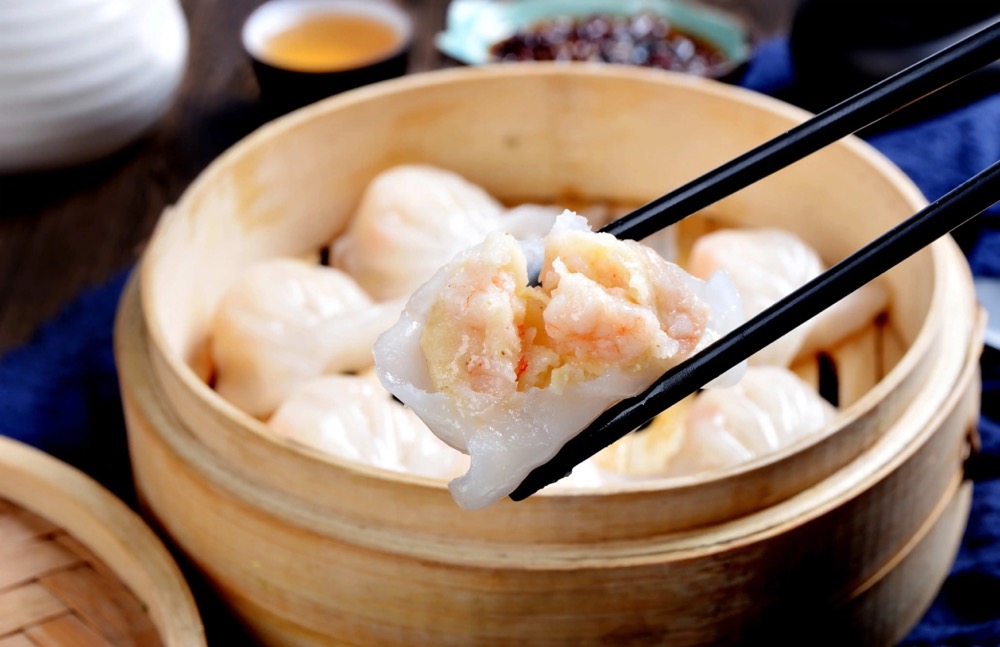
what does har gow taste like?
Har Gow has a delightful and unique taste that is loved by many. The thin and translucent wrapper provides a light and delicate texture, while the filling, made predominantly of fresh shrimp, contributes to the dish’s distinct flavor.
The shrimp filling is succulent and savory, with a subtle sweetness that comes from the natural flavors of the seafood. The combination of fresh shrimp, along with a touch of pork and various seasonings such as ginger, scallions, and mushrooms, creates a well-balanced and flavorful profile.
When steamed, the flavors of the shrimp and seasonings meld together, resulting in a harmonious taste that is both rich and refreshing. The shrimp itself is tender and juicy, while the seasonings add depth and complexity to the overall taste.
The dipping sauces or condiments that accompany Har Gow further enhance the experience. Commonly, it is enjoyed with a blend of soy sauce, vinegar, and chili oil or a ginger-scallion sauce. These condiments add a burst of tanginess, spiciness, or umami, enhancing the overall enjoyment of the dish.
In essence, Har Gow offers a delightful combination of delicate textures and a symphony of flavors, with the fresh shrimp as the star of the show. Its lightness and delicious taste make it a beloved delicacy in Cantonese cuisine and a must-try dish for those who appreciate the delights of dim sum.
what to serve with shrimp dumplings?
what sauce goes with shrimp dumplings?
Har Gow, with its delicious taste, is widely loved. Apart from being enjoyed on its own, it can be paired with various condiments and snacks. For example, dipping it in vinegar, ginger-garlic sauce, or chili oil can enhance the taste and flavor of the Har Gow. Additionally, pairing it with some light vegetables such as lettuce or Chinese broccoli not only adds nutritional value but also enriches the overall texture.
Furthermore, Har Gow can be served with main dishes or snacks. For instance, pairing it with a bowl of rice or noodles can provide a sense of satiety and fulfill one’s appetite.
In conclusion, the pairing options for Har Gow are highly flexible and can be tailored to individual preferences. Whether enjoyed by itself or paired with other foods, the delightful taste and texture of Har Gow are definitely worth a try.
har gow history
Har Gow, the delicious shrimp dumpling, originated in a family-style teahouse in the early 20th century in Wufeng Township, Wu Village, on the outskirts of Guangzhou. It has a history of over a century. The traditional Har Gow is semi-circular with twelve pleats resembling a spider’s belly, and it is filled with a delightful mixture of shrimp, meat, and bamboo shoots, making it incredibly tasty and smooth.
Wufeng Township is abundant in fish and shrimp, and the teahouse master combined fresh shrimp with pork and bamboo shoots to create the filling. Initially, the outer skin of the dumpling was made using sticky rice flour, resulting in a thicker texture. However, due to the delectable taste of fresh shrimp, its fame quickly spread. Teahouses in the city introduced the Har Gow and made improvements, using a thin layer of transparent wheat starch skin to wrap one or two shrimp as the main filling, with each dumpling limited to a single mouthful.
Legend has it that Wufeng Township was once prosperous, with beautiful surroundings and a river flanked by both sides, where fishing boats frequently sold fish and shrimp. In order to attract customers, the owner of this teahouse creatively purchased fresh local shrimp, combined them with pork and bamboo shoots to make the filling for the Har Gow. At that time, the skin of the Har Gow was not as shiny and thin, but due to its novelty and delicious taste, it quickly won the favor of diners. Soon, its reputation spread throughout Guangzhou, and major teahouses competed to produce and sell it. After improvements made by dim sum chefs, the original ingredients were replaced with “wheat starch,” resulting in an even better texture, which further attracted customers.
In summary, Har Gow, the famous shrimp dumpling, has a fascinating history that dates back to the early 20th century in Guangzhou’s Wufeng Township. Its popularity grew as it combined the richness of shrimp and other ingredients in a delightful package, eventually becoming a beloved delicacy served in teahouses across the city.
who invented har gow?
There are different claims about the inventor of Har Gow. Some people believe that Har Gow was invented by a dim sum chef named Huang Wenying during the late Qing Dynasty, while others attribute its creation to a teahouse chef in Wufeng Township, Wu Village. According to the legend, the teahouse chef in Wufeng Township used fish and shrimp meat instead of pork as the filling for a dumpling, creating a delicious and smooth delicacy, which was the prototype of Har Gow. Later, the skin of the dumpling was made using sticky rice flour instead of wheat flour, resulting in a thicker texture. However, due to the delectable taste of fresh shrimp, Har Gow became a signature dish for teahouse owners to attract customers.
Nowadays, Har Gow has become one of the representatives of Guangdong’s dim sum, with its soft, smooth, and tender texture, making it a delightful and sought-after treat among consumers.
where does har gow originate?
Har Gow is a specialty snack from Guangdong Province, Guangzhou City, belonging to Cantonese cuisine. This dish originated from a family-style teahouse in Wufeng Township, Wu Village, on the outskirts of Guangzhou, and has a history of over a century. Traditional Har Gow is shaped like a half-moon, with twelve pleats resembling a spider’s belly. It is filled with a delicious combination of shrimp, meat, and bamboo shoots, offering a delightful and savory taste.
The preparation of Har Gow requires great attention to detail. High-quality shrimp, meat filling, and winter bamboo shoots are chosen as the filling and mixed with seasonings. Then, the mixture is wrapped in a thin and resilient dough to form the dumpling shape, which is then steamed until cooked. During the preparation process, it is crucial to select fresh shrimp and meat filling while mastering the proper timing and temperature to ensure that Har Gow meets the standard in terms of taste and texture.
Har Gow is not only popular in teahouses and restaurants in Guangzhou but also widely enjoyed at various family gatherings and festival tables. Its delightful taste and chewy outer skin make it an ideal accompaniment to clear tea or soy milk. Additionally, Har Gow serves as a signature snack representing many people’s hometowns, with different preparation methods and flavors found in various regions.
Types of har gow
There are several types of Har Gow with different characteristics:
Black Truffle Har Gow: Featuring black truffle as the main filling, it has a unique and delicious taste.
Typhoon Shelter Har Gow: Made with Typhoon Shelter seasoning as the main filling, it offers a savory and spicy flavor.
Kung Fu Soup Har Gow: Highlighting a rich broth as the main filling, it has a flavorful and robust taste.
Crystal Har Gow: Known for its thin and translucent skin, it has a refreshing and clear taste.
Mother and Child Har Gow: Differentiating between larger and smaller dumplings, it offers a layered and delicious taste.
Traditional Har Gow: This is the most classic style, using fresh shrimp as the main filling, it has a smooth and delightful taste, and the skin is chewy and delicious.
Seaweed Har Gow: Building upon the traditional Har Gow, it adds minced seaweed as a filling, providing a more diverse taste.
Taro Har Gow: Using taro puree as the filling, it has a sweet and soft texture that complements the fresh shrimp’s deliciousness.
Chive Har Gow: Using chives as the filling, it has a unique and fragrant taste that complements the fresh shrimp’s flavor.
Salted Egg Yolk Har Gow: Adding salted egg yolk to the traditional Har Gow, it has a richer and more fragrant taste.
Artistic Har Gow: This is an innovative style with various shapes and flavors, such as star-shaped, butterfly-shaped, heart-shaped, etc.
Additionally, the Har Gow Emperor, apart from shrimp, meat, and bamboo shoots, also includes vegetables such as wood ear mushrooms and carrots, making its taste even more diverse. Its size is larger than traditional Har Gow, and the skin is thinner and more transparent, giving it a more appealing appearance. The texture of Har Gow Emperor is soft with a chewy mouthfeel, and its taste is delightful, while traditional Har Gow has relatively firmer skin and is not as soft.
In conclusion, Har Gow Emperor and traditional Har Gow differ in filling, shape, and taste. Har Gow Emperor emphasizes the freshness of the filling and the transparency of the skin, while traditional Har Gow focuses more on the richness of the filling and the chewiness of the skin.
what is the har gow symbolize?
Har Gow, a traditional delicacy originated from Guangdong, China, is renowned as one of the three treasures of Cantonese cuisine. It features a thin, translucent skin wrapped around a delicious filling of fresh shrimp, creating a delightful combination of flavors and an appealing appearance that has captured the hearts of many.
The ingredients for making Har Gow consist of the outer dough and the inner filling. The outer dough is primarily made of flour, starch, water, salt, and oil, with the proportions of flour and starch determining the texture and transparency of the dumpling skin. The inner filling consists of shrimp, lean pork, fresh fat pork, bamboo shoots, chicken oil, and various seasonings such as salt, sugar, monosodium glutamate, pepper, and sesame oil, blended thoroughly to create the succulent shrimp filling.
To make Har Gow, the dough is rolled into thin sheets, and then wrapped around the shrimp filling. The dumplings are carefully sealed, and steamed for about 10-15 minutes until fully cooked. The process of making Har Gow requires skill and practice to achieve the perfect combination of thin skin and ample filling.
Har Gow is not only popular in Cantonese teahouses and restaurants in Guangzhou but also a favorite choice for various family gatherings and festive occasions. Its exquisite taste and chewy texture make it an ideal pairing with tea or soy milk. Moreover, Har Gow is a representation of local flavors, and various regions may have their own unique preparation methods and flavors.
Besides the traditional Har Gow, there are several other types of this delicacy that offer diverse tastes and experiences. Variations like Black Truffle Har Gow, Windproof Prawn Har Gow, Kung Fu Soup Har Gow, Crystal Prawn Har Gow, Mother and Child Har Gow, and many others showcase the creativity and innovation in the world of dumplings.
In summary, Har Gow, with its diverse types and symbolic meanings, represents good fortune, prosperity, and longevity. Its association with the auspicious dragon and its adaptability akin to a shrimp swimming gracefully in water contribute to its significance. As people savor the delightful taste of Har Gow, they also embrace the best wishes and blessings it carries for a wonderful life ahead.
har gow in Chinese medical
Har Gow, as a delicious snack, has certain effects and benefits in traditional Chinese medicine:
Cardiovascular Protection: Har Gow is believed to have cardiovascular benefits.
Lactation Promotion: Shrimp in Har Gow is known for its lactation-promoting properties. Additionally, its high content of phosphorus and calcium contributes to nourishing infants and pregnant women.
Alleviation of “Jet Lag”: Research by scientists from Osaka University in Japan suggests that astaxanthin found in shrimp can be beneficial in alleviating the symptoms of “jet lag.”
However, there are several precautions and contraindications when consuming Har Gow:
Allergic Individuals: Shrimp in Har Gow can trigger allergic reactions in susceptible individuals, so those with allergies should be cautious when consuming it.
Weak Spleen and Stomach: Har Gow has a cooling nature, which may harm the spleen and stomach, making it unsuitable for people with weak digestive systems.
Liver and Kidney Disease Patients: Due to its high protein, sodium, and potassium content, Har Gow may not be suitable for individuals with liver and kidney diseases.
Pregnant Women: Shrimp in Har Gow contains a relatively high amount of cholesterol, so pregnant women should avoid excessive consumption to prevent any adverse effects on the fetus.
Furthermore, one should avoid consuming Har Gow together with certain fruits or foods. For instance, combining shrimp with fruits containing tannin (such as grapes, pomegranates, hawthorn, persimmons, etc.) can form insoluble complexes that may irritate the gastrointestinal tract. Combining shrimp with fruits containing tannic acid (such as grapes, pomegranates, hawthorn, persimmons, etc.) can decrease the oxidation of unsaturated fatty acids in shrimp and may produce indigestible precipitates in the human body. Additionally, consuming shrimp with fruits rich in vitamin C (such as oranges, lemons, etc.) can potentially lead to arsenic poisoning.
how to make har gow?
Making Har Gow requires some culinary skills, but with practice, you can create delicious and beautiful shrimp dumplings at home. Here’s a general step-by-step guide on how to make Har Gow:
Ingredients:
For the dough (outer skin):
1 cup wheat starch
1/4 cup tapioca starch
1 cup boiling water
1/4 teaspoon salt
1 tablespoon vegetable oil
For the filling:
1/2 pound fresh shrimp, peeled and deveined
1/4 cup bamboo shoots, finely chopped
1 tablespoon cornstarch
1 tablespoon water chestnut, finely chopped
1 tablespoon vegetable oil
1 teaspoon sesame oil
1/2 teaspoon salt
1/4 teaspoon white pepper
1/4 teaspoon sugar
1/2 teaspoon ginger, grated
Instructions:
Dough Preparation:
In a mixing bowl, combine wheat starch and tapioca starch.
Gradually add boiling water to the mixture while stirring continuously.
Add salt and vegetable oil and knead the dough until it becomes smooth and pliable. The dough should be soft but not sticky. If it’s too dry, add a little more boiling water. If it’s too wet, add a little more wheat starch.
Cover the dough with a damp cloth and let it rest for about 20-30 minutes.
Filling Preparation:
Finely chop the shrimp into small pieces or use a food processor to pulse until finely minced.
In a separate bowl, mix cornstarch with water to create a slurry.
In a wok or pan, heat vegetable oil over medium heat and sauté the chopped shrimp, bamboo shoots, and water chestnuts.
Add the salt, white pepper, sugar, and grated ginger to the mixture and stir well.
Pour in the cornstarch slurry and continue stirring until the filling thickens and becomes sticky.
Turn off the heat and add sesame oil to enhance the aroma. Mix well and let the filling cool.
Wrapping the Dumplings:
Roll the rested dough into a long cylinder and cut it into small portions.
Roll each portion into a small ball and flatten it into a thin circle using a rolling pin. The edges should be slightly thicker than the center to hold the filling.
Filling and Folding:
Place a teaspoon of the cooled shrimp filling in the center of the dough circle.
Gently fold the dough over the filling to create a half-moon shape.
Pinch the edges together to seal the dumpling. Make small pleats along the sealed edges, forming a crescent-shaped dumpling with around 10-12 pleats.
Steaming the Har Gow:
Place the dumplings on a parchment paper or cabbage leaf-lined steamer basket to prevent sticking.
Steam the Har Gow over high heat for about 5-7 minutes or until the wrapper becomes translucent and the filling is fully cooked.
Serve and Enjoy:
Serve the hot Har Gow with your favorite dipping sauce, such as a mixture of soy sauce, rice vinegar, and a dash of sesame oil.
how to cook har gow?
Cooking Har Gow is a simple and quick process, as these shrimp dumplings are typically steamed. Here’s a step-by-step guide on how to cook Har Gow:
Ingredients:
Har Gow (shrimp dumplings)
Water
Instructions:
Prepare the Steamer:
Fill a steamer pot or a large pot with water, making sure the water level is below the steaming rack or basket.
Line the Steamer Basket:
Line the steamer basket with parchment paper or cabbage leaves to prevent the Har Gow from sticking to the surface.
Arrange the Har Gow:
Place the Har Gow on the lined steamer basket, leaving some space between each dumpling to avoid sticking during cooking.
Steam the Har Gow:
Cover the steamer with its lid or a clean kitchen towel to trap the steam.
Place the steamer over high heat and bring the water to a rapid boil.
Once the water is boiling, reduce the heat to medium and let the Har Gow steam for about 5 to 7 minutes. The cooking time may vary depending on the size and thickness of the dumplings. They are done when the outer dough becomes translucent and the shrimp filling is fully cooked.
Check for Doneness:
You can check if the Har Gow is fully cooked by cutting one open. The shrimp inside should be opaque, and the dough should be soft and slightly chewy.
Serve:
Carefully remove the steamer from the heat.
Transfer the steamed Har Gow to a serving plate or a bamboo steamer for an authentic presentation.
Dipping Sauce:
Har Gow is often served with a simple dipping sauce. You can mix soy sauce, rice vinegar, and a dash of sesame oil to create a delicious dipping sauce. Adjust the proportions to suit your taste.
Enjoy:
Serve the hot and steaming Har Gow alongside the dipping sauce.
Use chopsticks to pick up the dumplings, dip them in the sauce, and savor the delicate and flavorful taste of the shrimp dumplings.
har gow vs shumai
Har Gow and Siu Mai are two traditional delicacies in Chinese cuisine, and they have distinct differences in their ingredients, appearance, texture, and steaming time. Har Gow is mainly found in Guangdong and Fujian provinces in China, loved for its thin and flavorful dough wrapping and delicious shrimp filling. On the other hand, Siu Mai is popular across various regions in China, featuring a pyramid-like shape with exposed meat filling on the top, offering a soft, savory, and aromatic experience.
In terms of ingredients, the primary components of Har Gow are shrimp and wheat flour, while Siu Mai consists of wheat flour and pork. Additionally, Har Gow has a half-moon shape, whereas Siu Mai has a pyramid-like shape with the meat filling exposed on the top. Regarding texture, Har Gow has a soft yet resilient dough, while Siu Mai has a relatively thinner dough with a soft and tender texture. As for steaming time, Har Gow requires a shorter cooking time, while Siu Mai takes a bit longer.
Apart from these differences, Har Gow and Siu Mai also vary in their nutritional content. Har Gow contains abundant high-quality protein, low fat, calcium, iron, and other essential nutrients, providing benefits such as boosting immunity, replenishing energy, and delaying aging. On the other hand, Siu Mai is rich in protein, fat, carbohydrates, vitamins, and minerals, offering advantages such as energy supplementation, enhanced immunity, and prevention of anemia.

In conclusion, although Har Gow and Siu Mai are both delectable traditional Chinese snacks, they exhibit notable distinctions in their ingredients, appearance, texture, and steaming time. When enjoying these two delicacies, individuals can choose according to their personal preferences and savor the diverse culinary culture they represent.
har gow vs spring roll
Har Gow and Spring Rolls differ significantly in their ingredients, flavors, appearance, and cooking methods:
Ingredients: The primary ingredients of Har Gow are shrimp and wheat flour, while Spring Rolls consist of spring roll wrappers, chives, cabbage, bean sprouts, chicken breast, and other fillings.
Flavor: Har Gow has a delicious, smooth, and savory taste, whereas Spring Rolls come in various flavors, including salty, sweet, and sour.
Appearance: Har Gow is typically shaped like a half-moon with thin and generous fillings, while Spring Rolls are long and cylindrical or flat.
Cooking Method: Har Gow is cooked by boiling or steaming, while Spring Rolls are fried or deep-fried in oil.
Additionally, Har Gow and Spring Rolls also differ in terms of their historical and cultural backgrounds, consumption methods, and nutritional values. Har Gow is a distinctive snack belonging to Cantonese cuisine, originating in Guangzhou, Guangdong province, with a history of over a century. On the other hand, Spring Rolls have ancient origins and are associated with the Cold Food Festival, making them one of China’s traditional foods. The consumption methods vary, with Har Gow typically served as a dim sum or breakfast item, while Spring Rolls can be enjoyed as a main dish or snack. Furthermore, Har Gow is rich in high-quality protein, low fat, calcium, iron, and other essential nutrients, providing benefits such as boosting immunity, replenishing energy, and delaying aging. Spring Rolls, on the other hand, are abundant in protein, fat, carbohydrates, vitamins, and minerals, offering advantages such as energy supplementation, enhanced immunity, and prevention of anemia.
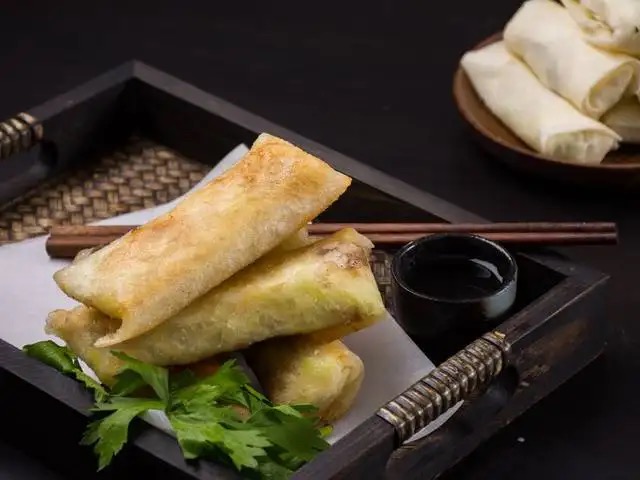
In summary, Har Gow and Spring Rolls are distinct Chinese delicacies with noticeable differences in their ingredients, flavors, appearance, and cooking methods. They also bear different historical and cultural significances, consumption styles, and nutritional contributions.
har gow vs egg roll
Har Gow and Egg Rolls have significant differences in their ingredients, taste, and shape.
Ingredients: The main ingredients of Har Gow are shrimp and wheat flour, while Egg Rolls consist of wheat flour, beaten eggs, and white sugar.
Taste: Har Gow has a delightful and smooth taste, whereas Egg Rolls have a sweet and crispy flavor.
Shape: Har Gow is typically shaped like a half-moon, while Egg Rolls are cylindrical or rolled.
Additionally, Har Gow and Egg Rolls also differ in their historical and cultural backgrounds, consumption methods, and nutritional values. Har Gow is a distinctive snack belonging to Cantonese cuisine and has a history of over a century in Guangzhou, Guangdong province. On the other hand, Egg Rolls are a portable snack with a long history. Har Gow is usually served as a dim sum or breakfast item, while Egg Rolls can be enjoyed as a snack or tea-time treat. Furthermore, Har Gow is rich in high-quality protein, low fat, calcium, iron, and other essential nutrients, providing benefits such as boosting immunity, replenishing energy, and delaying aging. Egg Rolls, on the other hand, are abundant in protein, fat, carbohydrates, vitamins, and minerals, offering advantages such as energy supplementation, enhanced immunity, and prevention of anemia.
In conclusion, Har Gow and Egg Rolls are traditional delicacies with noticeable differences in their ingredients, taste, and shape. When tasting these two delicacies, people can appreciate their distinct flavors and nutritional values, experiencing the richness of Chinese cuisine.
har gow vs hakaw
Har Gow and Hakaw are two similar but distinct dishes in Chinese cuisine, particularly in the realm of dim sum. Let’s compare the two:
Ingredients:
Har Gow: The main ingredient in Har Gow is shrimp, which is finely chopped or minced and mixed with some pork and other seasonings. The shrimp filling is then wrapped in a thin and translucent wheat starch wrapper.
Hakaw: Hakaw is essentially a type of Har Gow that specifically focuses on the shrimp filling. The key difference lies in the fact that Hakaw is made with a more refined and delicate shrimp filling, usually consisting of whole, succulent shrimp seasoned with a little bit of bamboo shoot or water chestnut for added texture.
Flavor and Texture:
Har Gow: Har Gow has a delightful combination of flavors, with the shrimp and pork mixture providing a savory taste. The thin and delicate wrapper complements the tender shrimp filling, creating a harmonious and balanced experience. The texture is soft and succulent.
Hakaw: Since Hakaw primarily emphasizes the shrimp filling, its flavor is more focused on the sweetness and natural taste of the shrimp. The texture of the shrimp in Hakaw is showcased more prominently, with a firm and bouncy bite.
Wrapper:
Har Gow: Har Gow features a thinner, semi-translucent wrapper made from wheat starch, which allows the shrimp filling to be slightly visible.
Hakaw: Hakaw also uses a thin, translucent wheat starch wrapper, but it may be even thinner to showcase the whole shrimp filling more clearly.
Origins:
Har Gow: Har Gow is believed to have originated in Guangdong province, particularly in Guangzhou, and it has become a representative dim sum item worldwide.
Hakaw: Hakaw is essentially a variation of Har Gow, with a specific emphasis on showcasing the succulent shrimp filling. Like Har Gow, Hakaw is also associated with Guangdong cuisine.
In summary, both Har Gow and Hakaw are delightful dim sum dishes featuring shrimp fillings wrapped in thin, translucent wheat starch wrappers. However, Hakaw specifically highlights the shrimp, featuring whole and succulent shrimp as the main attraction, whereas Har Gow combines shrimp with other ingredients for a more diverse flavor profile.
har gow vs dumpling
Har Gow and Jiaozi (dumplings) have significant differences in their ingredients, taste, and shapes.
Ingredients: The main ingredients for Har Gow are shrimp and wheat flour, while Jiaozi primarily consists of wheat flour and water, with various vegetable or meat fillings.
Taste: Har Gow has a delicious and smooth taste due to its succulent shrimp filling, while Jiaozi offers different taste experiences, ranging from soft and chewy to crispy, depending on the preparation.
Shape: Har Gow is typically shaped like a half-moon, while Jiaozi comes in various forms, including crescent, round, or wonton shapes.
In addition, Har Gow and Jiaozi differ in their historical and cultural significance, eating methods, and nutritional value. Har Gow is a specialty snack in Guangzhou, Guangdong Province, belonging to Cantonese cuisine, with a history of over a century. Jiaozi, on the other hand, is a traditional Chinese staple food with a long history and is widely consumed throughout the country. Har Gow is often served as a dim sum or breakfast item, while Jiaozi can be a main meal or snack. Both dishes offer distinct nutritional benefits, with Har Gow being rich in high-quality protein, low fat, calcium, iron, and other nutrients, beneficial for immune function, energy replenishment, and anti-aging. Jiaozi, on the other hand, provides abundant protein, fat, carbohydrates, vitamins, and minerals, promoting energy, immune health, and preventing anemia.
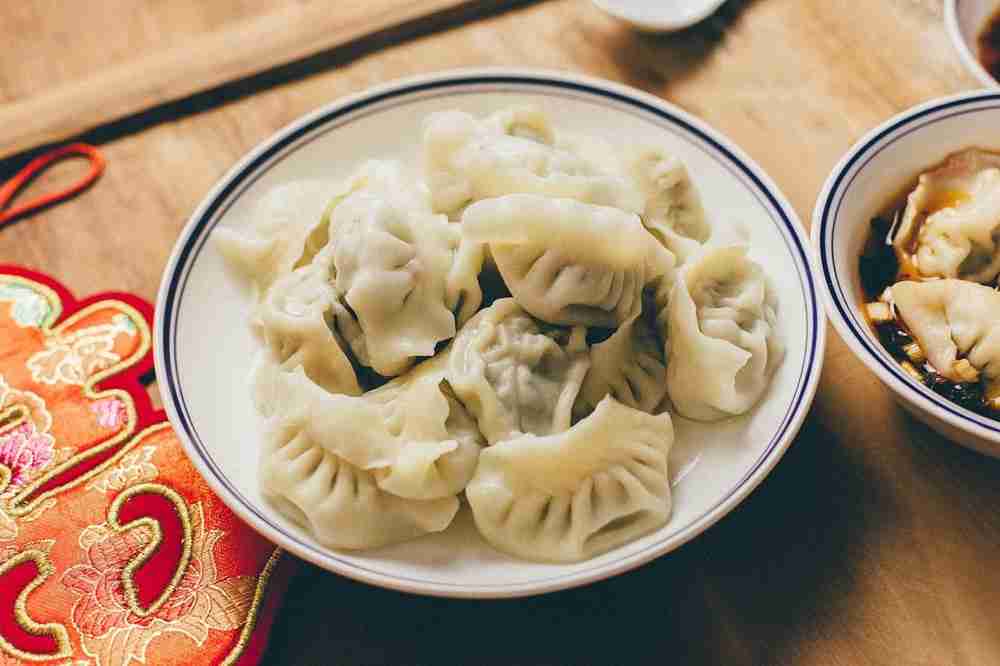
In summary, while Har Gow and Jiaozi are both delectable traditional snacks, they exhibit notable differences in ingredients, taste, and shapes. Enjoying these two delicacies allows one to appreciate their unique flavors and nutritional values, offering a glimpse into the rich culinary culture of China.
har gow vs steamed dumpling
Har Gow (shrimp dumplings) and Steamed Dumplings have distinct differences in their ingredients, taste, shapes, and cooking methods.
Ingredients: The main ingredients for Har Gow are shrimp and wheat flour, while Steamed Dumplings can have various fillings such as pork, chives, cabbage, and others, wrapped in different types of dough.
Taste: Har Gow offers a delicious and smooth taste due to its succulent shrimp filling, whereas Steamed Dumplings have diverse tastes, ranging from soft and chewy to fragrant and crispy, depending on the filling.
Shapes: Har Gow is typically shaped like a half-moon, while Steamed Dumplings come in various forms, such as crescent, round, or wonton-shaped.
Cooking Method: Har Gow is prepared by boiling or steaming, while Steamed Dumplings are exclusively steamed.
Additionally, Har Gow and Steamed Dumplings differ in their historical and cultural significance, methods of consumption, and nutritional values. Har Gow is a specialty snack in Guangzhou, Guangdong Province, belonging to Cantonese cuisine, with a history of over a century. On the other hand, Steamed Dumplings are a traditional Chinese staple food with a long history, popular throughout the country. Har Gow is often served as dim sum or breakfast, whereas Steamed Dumplings can be a main meal or snack. Both dishes offer distinct nutritional benefits, with Har Gow being rich in high-quality protein, low fat, calcium, iron, and other nutrients, beneficial for immune function, energy replenishment, and anti-aging. Steamed Dumplings, on the other hand, provide abundant protein, fat, carbohydrates, vitamins, and minerals, promoting energy, immune health, and preventing anemia.
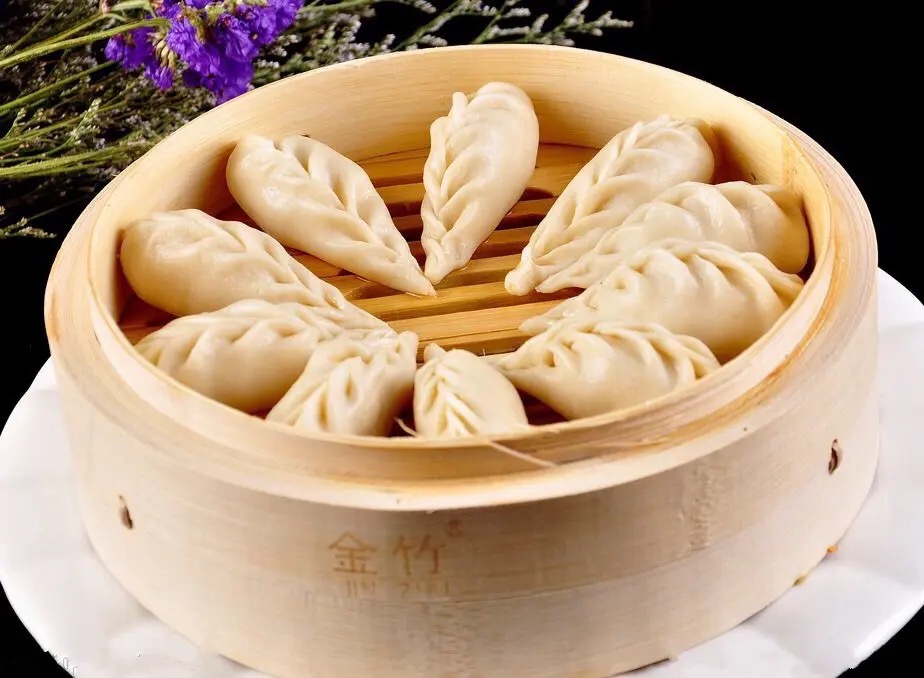
In conclusion, while Har Gow and Steamed Dumplings are both delectable traditional snacks, they exhibit notable differences in ingredients, taste, shapes, and cooking methods. Enjoying these two delicacies allows one to appreciate their unique flavors and nutritional values, offering a glimpse into the rich culinary culture of China.
har gow vs Cheong fen
Har Gow (shrimp dumplings) and Cheung Fun (rice noodle rolls) differ significantly in their ingredients, taste, shapes, and cooking methods.
Ingredients: The main ingredients for Har Gow are shrimp and wheat flour, while Cheung Fun requires rice batter, meat fillings, vegetable fillings, and others.
Taste: Har Gow offers a delicious and smooth taste with succulent shrimp filling, while Cheung Fun has a delicate and smooth texture with a refreshing flavor.
Shapes: Har Gow is typically shaped like a half-moon, whereas Cheung Fun comes in long strips or rolls.
Cooking Method: Har Gow is prepared by boiling or steaming, while Cheung Fun is created by steaming rice batter, which forms into noodle-like rolls.
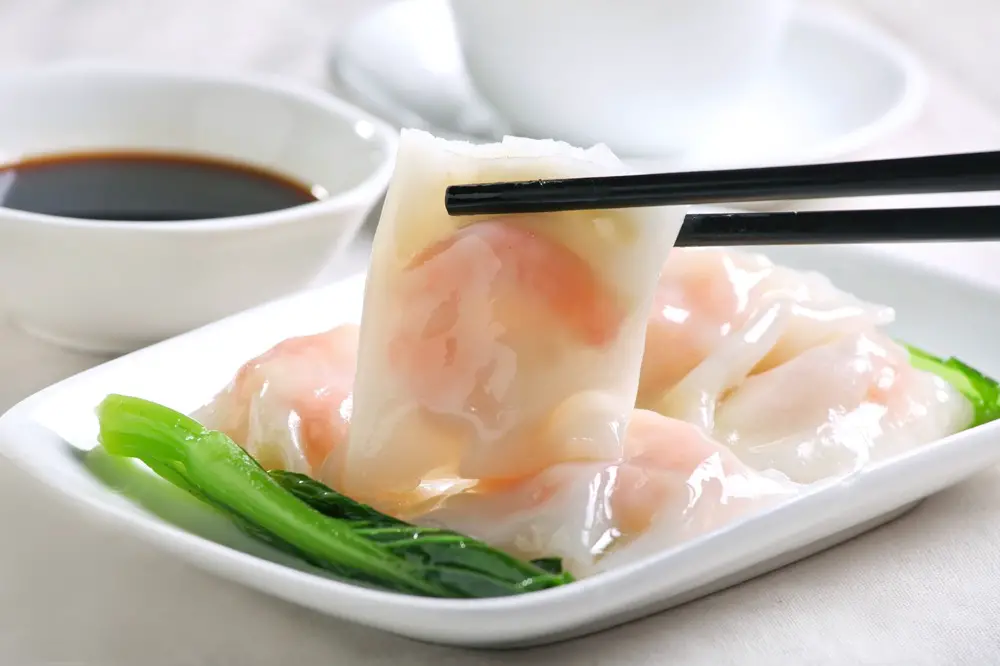
In addition to these differences, Har Gow and Cheung Fun also vary in their historical and cultural significance, methods of consumption, and nutritional values. Har Gow is a signature Cantonese dim sum and has a history of over a century in Guangzhou, Guangdong Province, representing the Cantonese culinary tradition. On the other hand, Cheung Fun is another popular Cantonese snack with a unique rice flour-based preparation, offering a delightful taste experience. Har Gow is commonly served as a dim sum or breakfast dish, while Cheung Fun can be enjoyed as a main course or snack. Both dishes hold nutritional value, with Har Gow being rich in high-quality protein, low fat, calcium, iron, and other nutrients, which contribute to improved immunity, energy replenishment, and anti-aging effects. Cheung Fun, with its protein, fat, carbohydrates, vitamins, and minerals, delights the palate with its distinctive rice fragrance and sweet taste.
In conclusion, Har Gow and Cheung Fun are both delectable traditional snacks, yet they showcase remarkable differences in their ingredients, taste, shapes, and cooking methods. Enjoying these two delicacies allows one to savor their diverse flavors and appreciate the rich culinary culture of China.
shrimp dumplings and wonton noodle soup
Har Gow Wonton Noodle is a traditional Cantonese snack from Guangzhou, Guangdong Province. It consists of har gow (shrimp dumplings), wonton, and noodles. To prepare Har Gow Wonton Noodle, one needs to make the har gow and wonton separately and then cook them together with noodles. Afterward, seasonings are added before serving. The dish offers a delicious and smooth taste, rich in nutrients, making it suitable for both a main course or a snack.
is har gow healthy
Har gow can be a relatively healthy food option when consumed in moderation and as part of a balanced diet. Its healthiness depends on the ingredients used and the cooking method.
The filling of har gow is typically made with shrimp, which is a good source of protein and various nutrients, including selenium, vitamin B12, and omega-3 fatty acids. Shrimp is low in saturated fat and calories, making it a healthier protein choice compared to some other meats.
However, the outer wrapper of har gow is made from wheat flour, which adds carbohydrates to the dish. Additionally, the dumplings are usually served with a dipping sauce, which may contain sodium and sugar.
Some health considerations for har gow:
Moderation: As with any food, moderation is key. Eating har gow in excessive amounts can contribute to an excessive intake of carbohydrates and sodium.
Allergies: People with shellfish allergies should avoid har gow as it contains shrimp.
Cooking method: Steamed har gow is healthier than fried or pan-fried versions, as it reduces the amount of added fat.
Dipping sauce: Be mindful of the dipping sauce, as some varieties can be high in sodium. Opt for a lighter or reduced-sodium sauce if available.
Overall, har gow can be a part of a healthy diet when enjoyed in moderation and as part of a varied and balanced meal plan. If you have specific dietary concerns or restrictions, it’s always a good idea to consult with a healthcare professional or a registered dietitian.
shrimp dumpling calories
The number of calories in shrimp dumplings (har gow) can vary depending on the size, ingredients, and cooking method used. On average, a typical serving of four medium-sized steamed shrimp dumplings contains approximately 150 to 200 calories.
Please keep in mind that the calorie content can vary based on the specific recipe and the brand of dumplings you consume. Additionally, if the dumplings are fried or served with a high-calorie dipping sauce, the calorie count will be higher.
If you are looking for precise calorie information, it’s best to check the packaging or consult a nutrition database for the specific brand or recipe you are using.
dream of har gow meaning
Dreaming of shrimp dumplings indicates that your closest competitor is very strong and challenging to defeat. The scene of the dream can also have the following implications:
Dreaming of shrimp dumplings at night suggests a high level of romantic luck. It’s a good time to go on a date with your partner to strengthen your relationship.
Dreaming of shrimp dumplings during the day indicates that your luck is favorable, and your career prospects will gradually improve. Small successes will boost your confidence.
The interpretation of waking up in different states:
- Naturally waking up indicates that your recent luck is not good and there may be financial crises.
- Suddenly waking up suggests that you have thoughts of making money recently but may face difficulties and miss opportunities.
Different meanings based on the season of the dream:
- Dreaming in spring indicates that you will effectively manipulate people’s minds using insight.
- Dreaming in summer suggests that your financial luck is not good, and you may encounter obstacles when trying to start your own business due to insufficient funds.
- Dreaming in autumn indicates unfavorable love luck.
- Dreaming in winter suggests that your anticipated plans may not come to fruition, leading to disappointment.
Different meanings based on the dreamer’s gender:
- Women dreaming of shrimp dumplings may experience unsatisfactory interpersonal relationships with friends, colleagues, or acquaintances.
- Men dreaming of shrimp dumplings suggest they will have good harvests.
Different meanings based on the dreamer’s age:
- Young people dreaming of shrimp dumplings may imply potential health concerns and should pay attention to their well-being.
- Middle-aged people dreaming of shrimp dumplings indicate that they will surpass competitors in the market.
- Elderly people dreaming of shrimp dumplings suggest significant obstacles and a challenging journey with few opportunities.
Different meanings based on the dreamer’s occupation:
- Workers dreaming of shrimp dumplings should be cautious about their health as they may fall ill.
- Students dreaming of shrimp dumplings may feel overwhelmed by responsibilities and high ideals, leading to frustration.
- Unemployed individuals dreaming of shrimp dumplings may become admired by others.
- Jobless people dreaming of shrimp dumplings may encounter problems in their marriage.
Different meanings based on the dreamer’s relationship status:
- Single people dreaming of shrimp dumplings may receive messages from distant places or engage in conversations with strangers.
- People in love dreaming of shrimp dumplings indicates that success is within reach if they seize current opportunities.
- Married individuals dreaming of shrimp dumplings suggest a happy and fulfilling life.
- Pregnant women dreaming of shrimp dumplings indicate future success in establishing a family and significant career progress, thanks to their partner’s support.
Whether you are a dim sum aficionado or a newcomer to Chinese cuisine, trying Har Gow is a must-have experience. Its delicate and sumptuous taste, along with the cultural significance attached to it, make it a truly special dish. So, the next time you find yourself at a dim sum restaurant or exploring the diverse flavors of Chinese cuisine, don’t miss the opportunity to savor the delightful and exquisite Har Gow.
